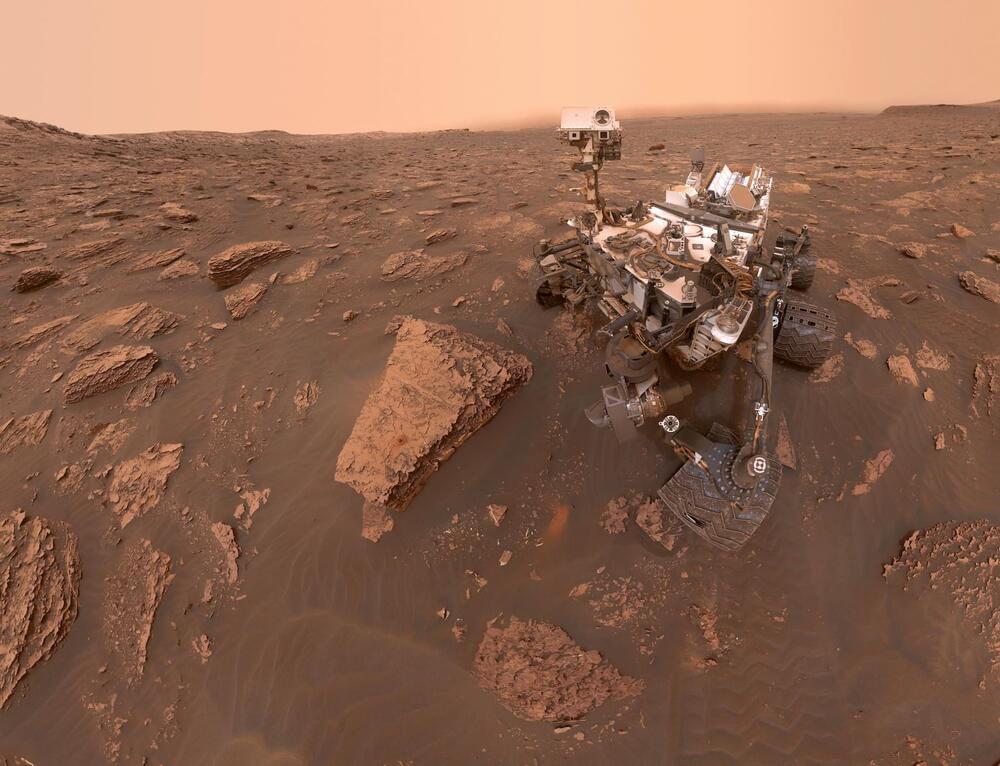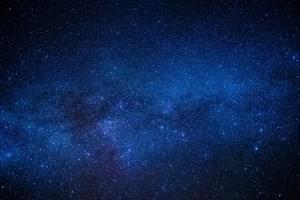There are so many places and things to explore in the universe! From distant.
exoplanets to faraway galaxies that might host intelligent life, to massive black holes, to.
bright stars. However, there is a problem with space exploration; distance! Everywhere.
you want to go in deep space is far! For example, Elon Musk wants to put humans on.
Mars permanently while NASA wants to send astronauts there. However, any traveler.
going to Mars has to endure a grueling trip through harsh space that lasts not less than.
five months, even with the most powerful rocket in history! If only we could find a faster.
way to travel through space! Also, the next star to us is about 4.5 light-years away.
making it impossible to visit with the current space technologies! However, an.
accidental discovery promises to fix that problem by enabling faster than the speed of.
light travel! What is the discovery, how does it affect space travel, and how does it affect.
you personally? Join us as we explore how NASA scientists accidentally discover the.
world’s first Warp Bubble!
Warp travel is not strange to fans of the Star Trek franchise. The warp drive is a.
charming futuristic technology from Star Trek Universe, which since its first episode in.
1966, includes ten television series and thirteen feature films. In these series and.
movies, characters explore the universe using powerful and fast spaceships, traveling.
from planet to planet and communicating with a crew of aliens. The torsion engine is the.
center of attraction because, without it, the story would be implausible. The universe is.
strange, unimaginable, and insanely large, and even if you want to visit the next star.
the immense cosmic distances create an almost impossible barrier!
Let’s take a look at the next star, Proxima Centauri, 4.5 light-years away. This distance.
means it takes 4.5 years to reach the star if you could manage to attain the speed of.
light! Light flies at full cosmic speed and acts as a sort of universal speed cap, so any.
other method takes longer! In fact, if you decide to use the fastest space probe ever.
built, the long journey through the interstellar void would take nearly eight thousand.
years! So, it makes sense to stay put to Earth and its immediate environment!
Of course, the Star Trek crew didn’t stay close to the Earth because they found a.
solution! This solution makes long-distance travel possible by shortening the distance!
The torsion engine, using warp drive tech, achieves this by juggling space and time.
making for great entertainment! Warp drive was destined to remain imaginary until a.
scientist suddenly realized that such an engine was really possible at the end of the last.
century!
The physicist was Miguel Alcubierre, and he came up with a theory that rocked the.
scientific community globally. In 1994, Alcubierre watched an episode of Next.
Generation while doing his Ph.D. research on Einstein’s general theory of relativity.
where heavy masses can curve space and time. And so Alcubierre picked up a scrap of.
paper, did the calculations, and laid the foundation for an article that appeared in the.
science magazine later that year!
In his paper, Alcubierre describes how you can compress space and time in front of a.
spacecraft and stretch it back behind the ship so that you have to travel a much smaller.
distance to the desired destination safely trapped in what he calls a torsion bubble! In.
visualization, the concept was compared to a surfer riding a wave and a metaphor often.
used to describe how a ship could travel the stars. There is, however, a problem with.
Alcubierre’s warp bubble! You see, the warp engine is tough to build in reality! You can’t.
just curve space forcefully with normal mass! To do so, you need exotic matter, which.
has negative gravity!
Dozens of Warp Engine publications would follow in the following decades. But they.
also remained theoretical exercises and thought experiments that manipulated the.
formulations of the theory of relativity in search of new insights. The need for the foreign.
matter remained!
That was until Eric Lentz, a physicist at the Pacific Northwest National Laboratory in the.
US, stepped in. He watched Star Trek as a kid. However, he has not been able to forget.
Category: alien life – Page 92
Astronomers Suggest a Surprising New Way to Detect Alien Megastructures
How do you power a super advanced alien civilization? Soak up a star.
We harness the power of the sun using solar panels. What if you were to scale this idea to astronomical proportions? Surround an entire star with solar-collecting structures or satellites to power your sprawling alien galactic empire. Such massive structures are known as megastructures—in this case a “Dyson sphere.” We are already trying to detect possible megastructures in space using the dimming of a star and the glow of megastructure components in infrared light. But recent research provides a new detection method—a Dyson sphere may cause its host star to swell and cool.

NASA may have discovered evidence of ancient life on Mars
New findings from the Curiosity Rover’s samples have given scientists another look at distinct carbon signatures found on Mars.
NASA’s Curiosity Rover continues to send back new information about the Red Planet on a frequent basis. The latest discovery brings news of an interesting carbon signature that we didn’t expect to see on Mars. Following analyzations of rock samples returned by the rover, NASA announced that several of the samples are rich in a carbon type that we see on Earth, too. The signature, NASA claims, is most often associated with biological processes, which could give more credence to the possibility of life on Mars.
Don’t Miss: Thursday’s deals: $179 AirPods Pro, $40 Echo Show 5, $15 pillows, $20 sheets, more
Of course, like many previous samples recovered from the Red Planet, these new ones continue to raise new questions. It’s worth noting that the existence of the carbon type on Mars isn’t necessarily proof of ancient life. A new study says that the signature could be proof of ancient life. However, it could also just be the result of an interaction between carbon dioxide and ultraviolet light. Additionally, it could be the remnants of carbon left behind after a major cosmic event that happened millions of years ago.
Xenobots — Novel Synthetic Life Forms At The Intersection Of Biology & Information Science
Learnings For Regenerative Morphogenesis, Astro-Biology And The Evolution Of Minds — Dr. Michael Levin, Tufts University, and Dr. Josh Bongard, University of Vermont.
Xenobots are living micro-robots, built from cells, designed and programmed by a computer (an evolutionary algorithm) and have been demonstrated to date in the laboratory to move towards a target, pick up a payload, heal themselves after being cut, and reproduce via a process called kinematic self-replication.
In addition to all of their future potential that has been mentioned in the press, including Xenobot applications for cleaning up radioactive wastes, collecting micro-plastics in the oceans, and even helping terraform planets, Xenobot research offers a completely new tool kit to help increase our understanding of how complex tissues/organs/body segments are cooperatively formed during the process of morphogenesis, how minds develop, and even offers glimpses of possibilities of what novel life forms we may encounter one day in the cosmos.
This cutting edge Xenobot research has been conducted by an interdisciplinary team composed of scientists from University of Vermont, Tufts University, and Harvard, and our show is honored to be joined by two members of this team today.
Dr. Josh Bongard, Ph.D. (https://www.uvm.edu/cems/cs/profiles/josh_bongard), is Professor, Morphology, Evolution & Cognition Laboratory, Department of Computer Science, College of Engineering and Mathematical Sciences, University of Vermont.
U.S. LEAKED: Artificial Intelligence Just Found ALIENS In SPACE
🔔 Subscribe now for more Artificial Intelligence news, Data science news, Machine Learning news and more.
🦾 Support us NOW so we can create more videos: https://www.youtube.com/channel/UCItylrp-EOkBwsUT7c_Xkxg.
In the search for extraterrestrial intelligence (SETI), we’ve often looked for signs of intelligence, technology and communication that are similar to our own. But as astronomer and SETI trailblazer Jill Tarter points out, that approach means searching for detectable techno signatures, like radio transmissions, not searching for intelligence itself. At the moment scientists are considering whether artificial intelligence (AI) could help us search for alien intelligence in ways we haven’t even thought of yet.
As we think about extraterrestrial intelligence it’s helpful to remember humans are not the only intelligent life on Earth. For all we know, chimpanzees have culture and use tools, spiders process information with webs, cetaceans have dialects, crows understand analogies and beavers are great engineers. Non-human intelligence, language, culture and technology surround us to no end. Alien intelligence could look like an octopus, an ant, a dolphin or a machine or, on the other hand, be radically different from anything on Earth.
#Artificialintelligence #Space #NASA.
📺 Fun fact: Smart people watch the entire video!

How Lecturers Without Borders Shares The Joy Of Science
If you are a scientist, willing to share your science with curious teens, consider joining Lecturers Without Borders!
Established by three scientists, Luibov Tupikina, Athanasia Nikolau, and Clara Delphin Zemp, and high school teacher Mikhail Khotyakov, Lecturers Without Borders (LeWiBo) is an international volunteer grassroots organization that brings together enthusiastic science researchers and science-minded teens. LeWiBo founders noticed that scientists tend to travel a lot – for fieldwork, conferences, or lecturing – and realized scientists could be a great source of knowledge and inspiration to local schools. To this end, they asked scientists to volunteer for talks and workshops. The first lecture, delivered in Nepal in 2017 by two researchers, a mathematician and a climatologist, was a great success. In the next couple of years, LeWiBo volunteers presented at schools in Russia and Belarus; Indonesia and Uganda; India and Nepal. Then, the pandemic forced everything into the digital realm, bringing together scientists and schools across the globe. I met with two of LeWiBo’s co-founders, physicist Athanasia Nikolaou and math teacher Mikhail Khotyakov, as well as their coordinator, Anastasia Mityagina, to talk about their offerings and future plans.
Julia Brodsky: So, how many people volunteer for LeWiBo at this time?
Anastasia Mityagina: We have over 200 scientists in our database. This year alone, volunteers from India, Mozambique, Argentina, the United States, France, Egypt, Israel, Brazil, Ghana, Nigeria, Ethiopia, Botswana, Portugal, Croatia, Malaysia, Spain, Colombia, Italy, Germany, Greece, Denmark, Poland, the United Kingdom, Austria, Albania, Iran, Mexico, Russia, and Serbia joined us. Their areas of expertise vary widely, from informatics, education, and entrepreneurship, to physics, chemistry, space and planetary sciences, biotechnology, oceanography, viral ecology, water treatment, nanotechnology, artificial intelligence, astrobiology, neuroscience, and sustainability. We collaborate with hundreds of schools, education centers, and science camps for children in different parts of the world. In addition, our network includes more than 50 educational associations in 48 countries that help us reach out to approximately 8,000 schools worldwide.


Here’s How Humans Might Beat Other Intelligent Life in a Science Fictional Space Race
“Here’s How Humans Might Beat Other Intelligent Life in a Science Fictional Space Race | Tor.com”
Suppose for the moment that one is a science fiction writer. Suppose further that one desires a universe in which intelligence is fairly common and interstellar travel is possible. Suppose that, for compelling plot reasons, one wants humans to be the first species to develop interstellar flight. What, then, could keep all those other beings confined to their home worlds?
Here are options, presented in order of internal to external.
The easiest method, of course, is that while our Hypothetical Aliens—Hypotheticals for short!—are just as bright as we are, a glance at human prehistory suggests that there is no particular reason to think we were fated to go down the technological path that we did. Sure, the last ten thousand years have seen breakneck technological development, but that’s just a minute portion of a long history. Anatomically modern humans date back 300,000 years. The last ten thousand years have been highly atypical even for our sort of human. Other human species appear to have come and gone without ever venturing out of the hunter-gatherer niche. Perhaps the development of agriculture was a wildly unlikely fluke.
Why The Universe May Be Full Of Alien Civilizations Featuring Dr. Avi Loeb
In our first episode of John Michael Godier’s Event Horizon, we discuss the possibility of Alien civilizations moving to Galaxy Clusters to make the best use of mass and energy, why making copies of ourselves may be the key to interstellar travel and colonization, the habitability of planets around red dwarf stars such as Proxima Centauri, Black Holes, and so much more with our first guest Harvard Theoretical Physicist Dr. Avi Loeb, the Frank B. Baird Jr. Professor of Science at Harvard University.
Is Oumuamua a Light Sail? With Avi Loeb: https://youtu.be/VlpVIyBCG3s.
Dr. Avi Loeb’s website.
https://www.cfa.harvard.edu/~loeb/
From the First Star to Milkomeda By Dr. Avi Loeb.
A list of Dr. Loeb’s commentaries and most recent essays in Scientific American:
https://www.cfa.harvard.edu/~loeb/Opinion.html.
https://www.scientificamerican.com/author/abraham-loeb/
Dr. Loeb’s most recent public lecture on The Search for Life:

There are 40 billion billions of black holes in the universe
How many black holes are out there in the Universe? This is one of the most relevant and pressing questions in modern astrophysics and cosmology. The intriguing issue has recently been addressed by the SISSA Ph.D. student Alex Sicilia, supervised by Prof. Andrea Lapi and Dr. Lumen Boco, together with other collaborators from SISSA and from other national and international institutions. In a first paper of a series just published in The Astrophysical Journal, the authors have investigated the demographics of stellar mass black holes, which are black holes with masses between a few to some hundred solar masses, that originated at the end of the life of massive stars. According to the new research, a remarkable amount around 1% of the overall ordinary (baryonic) matter of the Universe is locked up in stellar mass black holes. Astonishingly, the researchers have found that the number of black holes within the observable Universe (a sphere of diameter around 90 billions light years) at present time is about 40 trillions, 40 billion billions (i.e., about 40 × 1018, i.e. 4 followed by 19 zeros!).
A new method to calculate the number of black holes
As the authors of the research explain: This important result has been obtained thanks to an original approach which combines the state-of-the-art stellar and binary evolution code SEVN developed by SISSA researcher Dr. Mario Spera to empirical prescriptions for relevant physical properties of galaxies, especially the rate of star formation, the amount of stellar mass and the metallicity of the interstellar medium (which are all important elements to define the number and the masses of stellar black holes). Exploiting these crucial ingredients in a self-consistent approach, thanks to their new computation approach, the researchers have then derived the number of stellar black holes and their mass distribution across the whole history of the Universe.